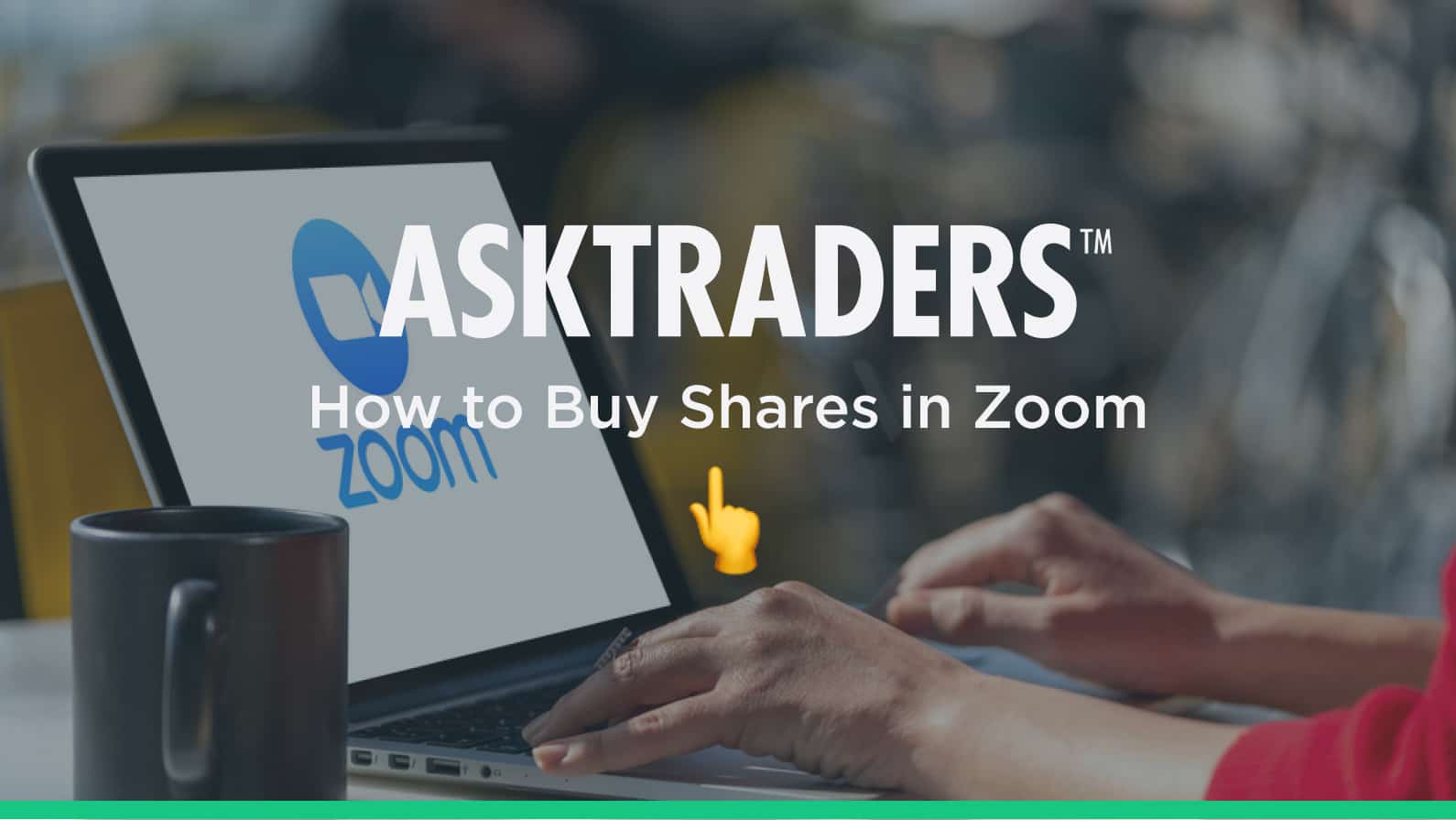Buying into small tech stocks that then take off can be one of the most profitable ways of investing. Video conferencing firm Zoom (NASDAQ: ZM) is one great example. In the ten months between January and October 2020, the Zoom share price increased by more than 750%.
YOUR CAPITAL IS AT RISK

Finding small tech start-ups is difficult and time-consuming. It’s also high-risk-reward. The alternative is to wait for firms like Zoom to be identified and then trade them as their valuation continues to rise when their goods or services become more widely accepted. You don’t need to get in right at the bottom, as joining the party late can also be profitable, and this review of Zoom will explain how. It will also outline ways to trade Zoom stocks using a trusted broker.
Table of contents
Overview of Zoom
Software firm Zoom was founded in 2011 and is headquartered in San Jose, California. It also has many other offices globally, in places such as China, Japan, India, Singapore, Australia, Germany, the Netherlands, and the United Kingdom.
The company offers a range of video-conferencing, teleconferencing, and online chat services. The teleconferencing market Zoom targeted is, in tech terms, relatively well established, but the software the firm developed in 2013 is quite simply ground-breaking.
Despite rivals such as Microsoft (Teams) creating their own versions of online meeting and calling software, Zoom has managed to maintain a strong share by being more user-friendly and having a design more compatible with how people want to meet online.
However, the share price is nowhere near its pandemic highs, and understandably, as fierce competition and the end of pandemic-related restrictions have weighed heavy on the stock price.
Zoom Shares: The Basics
Zoom didn’t turn a profit until 2019, the same year its shares were first made available to the public at an IPO price of $36. The stock is listed on the Nasdaq Exchange under ticker ZM, and by October 2020, strong buying pressure took ZM shares as high as $588. That’s a 16-fold return for day-one investors.
YOUR CAPITAL IS AT RISK
During 2020, Zoom saw a staggering increase in user numbers as lockdown measures related to the COVID-19 pandemic saw the world’s population turn to online communications. Zoom’s user-friendly functionality saw it become the video-conferencing choice of many. Most notably, the platform expanded from being a mainly business-based service to one that tapped into the home consumer market as well.
However, the pandemic-related tailwinds couldn't last, and the stock, as mentioned above, has been under significant pressure since then. In addition, there have been concerns regarding revenue challenges for the company.
There are pointers from technical analysis that suggest the time to buy Zoom shares is now, while those focused on fundamental analysis may be slightly more cautious despite the significant decline since 2020.
Even so, Zoom, which is part of the Nasdaq 100, was growing prior to the Covid pandemic. The events of 2020 may have acted as a catalyst for a new way of doing things, but this change in habits was already taking place. In addition, the company is well-positioned to meet any potential future surge in demand by scaling its infrastructure.
YOUR CAPITAL IS AT RISK
Steps to Buy Zoom Shares
In the same way that Zoom has revolutionised the way we interact, the way that the general public invests has been revolutionised by online brokers.
Buying Zoom shares is incredibly easy to do. It only takes a few minutes to have an account set up, deposit funds and begin trading. The step-by-step guide seen below shows how things work and offers top tips. There are a few things to look out for to ensure you get the very best deal.
Before we explain the mechanics of the process, it’s important to stress that using a regulated broker is a key priority. Limit your broker search to those that are regulated by at least one of the below tier-one regulators.
Tier-one regulators:
- The Financial Conduct Authority (FCA)
- The Australian Securities and Investments Commission (ASIC)
- The US Securities and Exchange Commission (SEC)
- Cyprus Securities and Exchange Commission (CySEC)
1. Research Zoom Shares
The volatile movement in the Zoom share price reflects analysts looking at the same core information but coming to radically different conclusions. Factor in the many and varied external events, such as the COVID-19 lockdown and you have a recipe for price whipsawing and a gravity-defying share price rally.
Strategies for trading Zoom can be based on fundamental and technical analysis. Momentum is often a key component.
Brokers offer research and learning material to help you form an opinion. There are also free news provisions to assist in the spotting of potential catalysts and the next share price rally.
2. Find a Broker
With such a high profile, most brokers offer markets in Zoom. All of the below-listed brokers provide an easy way to buy into the Zoom phenomenon, but the quality of research can vary depending on the broker. Some prioritise slashing costs, while others provide their clients with additional services such as high-grade in-house research and first-rate customer support.
AskTraders recommends trying out demo accounts from a few different brokers. These will help you find a best-fit broker but also help you familiarise yourself with each platform’s layout and avoid costly errors when you switch to live trading.
Searching for the Perfect Broker?
Discover our top-recommended brokers for trading stocks, CFDs, forex, cryptos, and beyond. Dive in and test their capabilities with complimentary demo accounts.
- eToro Top stock trading platform with 0% commission – Read our Review
- Admiral Markets More than 4500 stocks & ETFs available – Read our Review
- BlackBull 26,000+ Shares, Options, ETFs, Bonds, and other underlying assets – Read our Review
YOUR CAPITAL IS AT RISK. 76% OF RETAIL CFD ACCOUNTS LOSE MONEY
Demo accounts use virtual funds to trade real-time prices, so they are risk-free but offer an insight into the market for Zoom shares. When it comes to wiring real funds to a broker account, it is essential to use a regulated broker. Making the wrong choice and opting for an unregulated one can result in you losing all your funds.
A list of trusted FCA-regulated brokers can be found here.
3. Open & Fund an Account
Registering and setting up an online brokerage account should typically take only minutes to complete. Regulated brokers have a duty of care to their clients, which means they must enquire with a series of Know Your Client (KYC) questions. These allow the broker to build a profile and apply appropriate client protection protocols.
While questions on topics such as ‘any previous trading experience’ might make you feel you’re missing out on trading the markets, the fact that they are is actually a good thing as it’s an indication you’re signing up with a regulated broker.
After the form filling is completed, it’s simply a case of depositing funds. Whichever broker you choose, it’s likely they’ll offer a variety of payment methods, including credit/debit cards and bank transfer. Some of the payment methods incur costs and some don’t, so checking the T&Cs is a good idea.
4. Set Order Types
The core functionality of the different brokers is remarkably similar when it comes to booking a trade to buy Zoom shares. All you need to do is locate the market and enter the amount you want to buy or sell in cash terms or as a quantity of shares.
There are also a variety of further order types which are available to help with risk management. Instructions such as these are built-in, ensuring that your broker will automatically commit to buy or sell if the Zoom share price reaches a specific level. They mean you don’t have to watch the markets all day but can instead implement your strategy and rely on the platform to do the trading work for you.
- Market Order — An instruction to buy or sell a new Zoom position at current price levels.
- Limit Order — An instruction to buy or sell a new Zoom position if the price reaches a certain price level. If it doesn’t, your trade won’t be executed.
- Stop Loss — An instruction to sell an existing position in Zoom if the price reaches a certain level.
- Take Profits — An instruction to reduce the size of your Zoom position if the price reaches a certain level. This instruction locks in some profits by liquidising some (or all) of your holding and converting your equity position back to cash.
These other order types are optional, but it’s worth spending some time understanding how they work. Conventional thinking proposes that stop losses are an important risk management tool for beginners, but buy-and-hold investors may challenge that thinking, as stop-losses can flip investors out of positions at a loss if there is momentary whipsawing in price or a flash crash.
One important tip is to check if your broker includes stop-losses or take profits as default settings. If that is the case and you don’t manually override the instruction, you might find you unintentionally traded out of a position.
5. Select and Buy Zoom Shares
Once you’ve decided to buy AstraZeneca shares, the final step is as simple as clicking a button or tapping a screen. This will convert part of your cash pile into an equity position, and from then on, the value of your holding will fluctuate according to moves in market price.
Even investors with a long-term plan, can benefit from optimising their trade entry point. This article on the best time to trade offers insight into how to try and work your way into a position at the optimal price level.
YOUR CAPITAL IS AT RISK
Fees When Buying Shares in Zoom
One of the main reasons for the recent influx of retail investors into the financial markets has been the dramatic slashing of costs associated with trading. Intense competition between brokers has meant web-based platforms have been forced to pass on part of their cost savings to users, and this has led to more and more people trading their own accounts.
The barriers to entry are as low as they’ve ever been, but there are still a range of costs to watch out for. Trading is hard enough without giving up cash on administrative charges that you might be able to avoid.
- Payment processing charges — Very few brokers charge clients to deposit funds into online brokerage accounts, but some do apply a fee on withdrawals. It’s definitely worth checking the T&Cs.
- Third-party fees — Some payment methods swerve third-party payment fees, but others don’t. These don’t go to the broker but do need to be factored in and may influence which payment process you use.
- Commissions — Very few online stockbrokers charge a separate dealing commission on share transactions, but double-checking can help your P&L.
- Bid-Offer spread — This is the way online brokers generate most of their revenue. The difference between buying and selling prices can vary from broker to broker and market to market.
- FX conversion — If you fund a brokerage account using one currency, for example, GBP, but trade using another, such as USD, you will incur charges. The double-whammy is that these also apply when you reverse the process and withdraw funds. Avoiding currency conversions means you’ll avoid unnecessary charges.
- Inactivity fees — Some, but not all, brokers apply charges to your account if it’s dormant for a certain period of time. As these can kick in after as little as three months, they are something to look out for. ‘Inactivity’ can be defined by some brokers as not putting on a trade, while other brokers, such as Plus 500, consider logging into your account sufficient ‘activity’ to avoid any charges.
- Financing costs — Buying shares outright avoids the overnight financing charges associated with trading CFDs. If you intend to hold your investment for longer than a few weeks, then buying Zoom shares outright rather than in CFD form will likely prove more cost-effective. A more detailed breakdown of the pros and cons of CFD vs Share Dealing can be found in this report.
| eToro | Plus 500 | Markets.com | AvaTrade | |
|---|---|---|---|---|
| Live Account Fee | No charge | No charge | No charge | No charge |
| Demo Account Fee | No charge | No charge | No charge | No charge |
| Bid Offer Spread – Zoom shares | 67c | 322c | 190c | 55c |
| Cash Deposit Fee | No charge | No charge | No charge | No charge |
| Cash Withdrawal Fee | Yes – $5 per transaction | No charge | No charge | No charge |
| Inactivity Fee | Yes – $10 per month after 12 months inactivity | Yes – $10 per month after 3 months inactivity | Yes – $10 per month after 3 months inactivity | Yes – $50 per quarter after 3 months inactivity |
| FX Conversion Fee | Offers accounts in USD, only | Offers accounts in USD, GBP and EUR | Offers accounts in 14 base currencies incl. USD, GBP, EUR | Offers accounts in USD, GBP, EUR, CHF |
| Minimum Deposit | $200 (or equivalent) | $100 (or equivalent) | $250 (or equivalent) | $100 (or equivalent) |
Final Thoughts
The Zoom valuation is open to debate. Buying Zoom shares now may represent a chance for investors to buy at an attractive entry point, but there is nothing to say the stock may not also head lower, especially if the wider economy experiences a downturn. If you do decide to buy Zoom shares, remembering the basics, such as choosing a trusted broker and checking your trades, can allow you to limit your risk to whether or not the Zoom share price goes your way.










